Research on Method for Detecting Pipeline Blockages Based on Fluid Oscillation Theory
Abstract
:1. Introduction
2. Mathematical Model of Single Tube with Blockage
2.1. Single-Tube Blockage Model and Governing Equation
2.2. Analytical Solution under Fixed Boundary Conditions
- 1.
- The attenuation parameters of each harmonic are the sum of R and .
- 2.
- The sum of the components in each harmonic can be used to represent the pressure fluctuation of the blocked pipe, and the R value of the different harmonics is independent of the degree of harmonics n and exhibits exponential attenuation.
- 3.
- The values of are different for each harmonic, which is also key to detecting blockages.
- 4.
- is related to the location and magnitude of the blockage, but not to the location of the measurement.
3. Application of Fluid Oscillation Theory to Detection of Pipe Blockage
3.1. Fourier Series Analysis
3.2. Blockage Detection
3.2.1. Detection of Blockage Location
3.2.2. Detection of Blockage Magnitude
4. Experimental Verification of Blockage Detection
4.1. Experimental System
4.2. Experimental Verification
4.3. Results Discussion
5. Conclusions
- Based on the theory of fluid oscillation and the method of Fourier series analysis to detect the blockage problem in a pipeline system, the location and magnitude of blockage were determined using the parameters of blockage attenuation fluctuation caused by the blockage.
- The fluctuating pressures under the fluid oscillation of the pipeline system can be expressed as the sum of a series of harmonic components, each of which is exponentially attenuated by the sum of the attenuation parameters R and the blockage attenuation parameters ; when the pipeline blockage position is confirmed, the magnitude can be calculated by the blockage attenuation parameter R of each individual harmonic component.
- A pipeline test bench for detecting blockages was constructed according to the existing pipeline simulation test bench, and simulation experiments were designed to verify the blockage detection method. The experimental results show that the proposed method is accurate, reliable, and provides a reference for its application in practical engineering.
Author Contributions
Funding
Institutional Review Board Statement
Informed Consent Statement
Conflicts of Interest
References
- Chunyang, Z. A Study on Detection of Oil Pipeline Blockage Based on Free Oscillation Theory. Master’s Thesis, Harbin University of Technology, Harbin, China, 2016. [Google Scholar]
- Zhongyuan, J. Analysis and Identification Method of Abnormal Pressure Fluctuation in Oil Pipeline. Ph.D. Thesis, China University of Petroleum (East China), Qingdao, China, 2017. [Google Scholar]
- Zouari, F.; Blåsten, E.; Louati, M.; Ghidaoui, M.S. Internal pipe area reconstruction as a tool for blockage detection. J. Hydraul. Eng. 2019, 145, 4019019. [Google Scholar] [CrossRef] [Green Version]
- Yan, X.F.; Duan, H.F.; Wang, X.K.; Wang, M.L.; Lee, P.J. Investigation of transient wave behavior in water pipelines with blockages. J. Hydraul. Eng. 2021, 147, 4020095. [Google Scholar] [CrossRef]
- Kumar, P.; Mohapatra, P.K. Partial blockage detection in pipelines by modified reconstructive method of characteristics technique. J. Hydraul. Eng. 2022, 148, 4022003. [Google Scholar] [CrossRef]
- Zhang, C.; Alexander, B.J.; Stephens, M.L.; Lambert, M.F.; Gong, J. A convolutional neural network for pipe crack and leak detection in smart water network. Struct. Health Monit. 2022, 1–13. [Google Scholar] [CrossRef]
- Zhang, Y.; Duan, H.F.; Keramat, A.; Che, T.C. On the leak-induced transient wave reflection and dominance analysis in water pipelines. Mech. Syst. Signal Process. 2022, 167, 108512. [Google Scholar] [CrossRef]
- Wan, W.; Chen, X.; Zhang, B.; Lian, J. Transient simulation and diagnosis of partial blockage in long-distance water supply pipeline systems. J. Pipeline Syst. Eng. Pract. 2021, 12, 4021016. [Google Scholar] [CrossRef]
- Wan, W.; Zhang, B. The intermittent leakage phenomenon of incipient cracks under transient conditions in pipeline systems. Int. J. Press. Vessel. Pip. 2020, 186, 104138. [Google Scholar] [CrossRef]
- Zhang, B.; Wan, W. A transient-features-based diagnostic method of multi incipient cracks in pipeline systems. Int. J. Press. Vessel. Pip. 2022, 199, 104701. [Google Scholar] [CrossRef]
- Yuebin, W.; Ying, X.; Fen, W. A method for detection of blockage of compressed pipes based on free oscillation theory. J. Harbin Univ. Technol. 2014, 46, 45–50. [Google Scholar]
- Yang, L.; Fu, H.; Liang, H.; Wang, Y.; Han, G.; Ling, K. Detection of pipeline blockage using lab experiment and computational fluid dynamic simulation. J. Pet. Sci. Eng. 2019, 183, 106421. [Google Scholar] [CrossRef]
- Zhenren, C. A Study on Mechanical Analysis of Blocked Oil Mud Columns in Shallow Sea Oil Pipeline. Ph.D. Thesis, Northeast University of Petroleum, Xian, China, 2018. [Google Scholar]
- Wylie, E.B.; Streeter, V.L. Fluid Transients in Systems; Prentice-Hall Inc.: Englewood Cliffs, NJ, USA, 1993. [Google Scholar]
- Jianbin, Z.; Li, T. Analysis of Impact Impact of Gas Volatility in Pipeline. Pipeline Ind. Technol. Forum 2020, 19, 48–49. [Google Scholar]
- Tian, Y.; Zhao, X.F.; Tian, D.; Wu, R.; Tang, H. Dynamic detection of the multiple hydrate blockages in natural gas pipeline using mass pulse at the inlet. Appl. Mech. Mater. 2014, 490, 490–497. [Google Scholar] [CrossRef]
- Jing, Y. Numerical Simulation and Experimental Analysis of Nonlinear Oscillation of Gas in Tube. Ph.D. Thesis, Nanjing University of Aeronautics and Astronautics, Nanjing, China, 2014. [Google Scholar]
- Mohapatra, P.K.; Chaudhry, M.H. Hanif Chaudhry. Frequency responses of single and multiple partial pipeline blockages. J. Hydraul. Res. 2011, 49, 263–266. [Google Scholar] [CrossRef]
- Junkai, L.; Hui, Y. Causes and countermeasures of blockage and wear of slag water pipeline in gasification of coal water slurry. Chem. Eng. Design 2020, 30, 16–18. (In Chinese) [Google Scholar]
- Qinghua, K. CO2 Analysis of Transient Simulation of Long Pipeline Blocking. Ph.D. Thesis, Xi’an University of Petroleum, Xian, China, 2020. [Google Scholar]
- Linfeng, W.; Zao, F.; Xuefeng, Z. Pipeline blockage state evaluation based on optimized VMD and continuous hidden Markov model. Vib. Shock 2020, 39, 214–222, 233. [Google Scholar]
- Zhenshan, L. A new approach to solving the problem of pipe blocking of slurry pump in Brief. Energy Technol. 2020, 18, 54–58. [Google Scholar]
- Nazar, M.; Shahid, F.; Akram, M.S.; Sultan, Q. Flow on oscillating rectangular duct for Maxwell fluid. Appl. Math. Mech. 2012, 33, 717–730. [Google Scholar] [CrossRef]
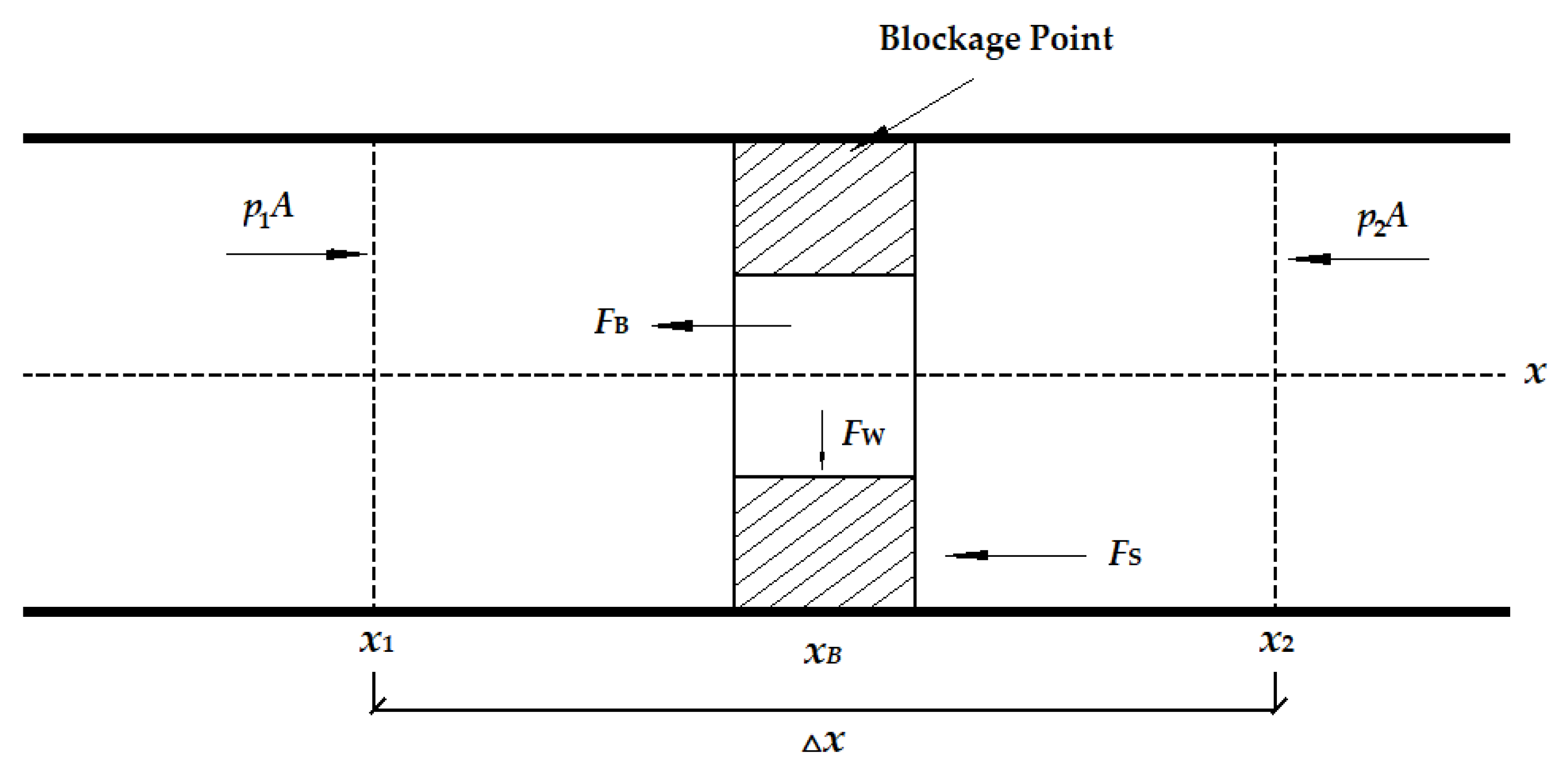


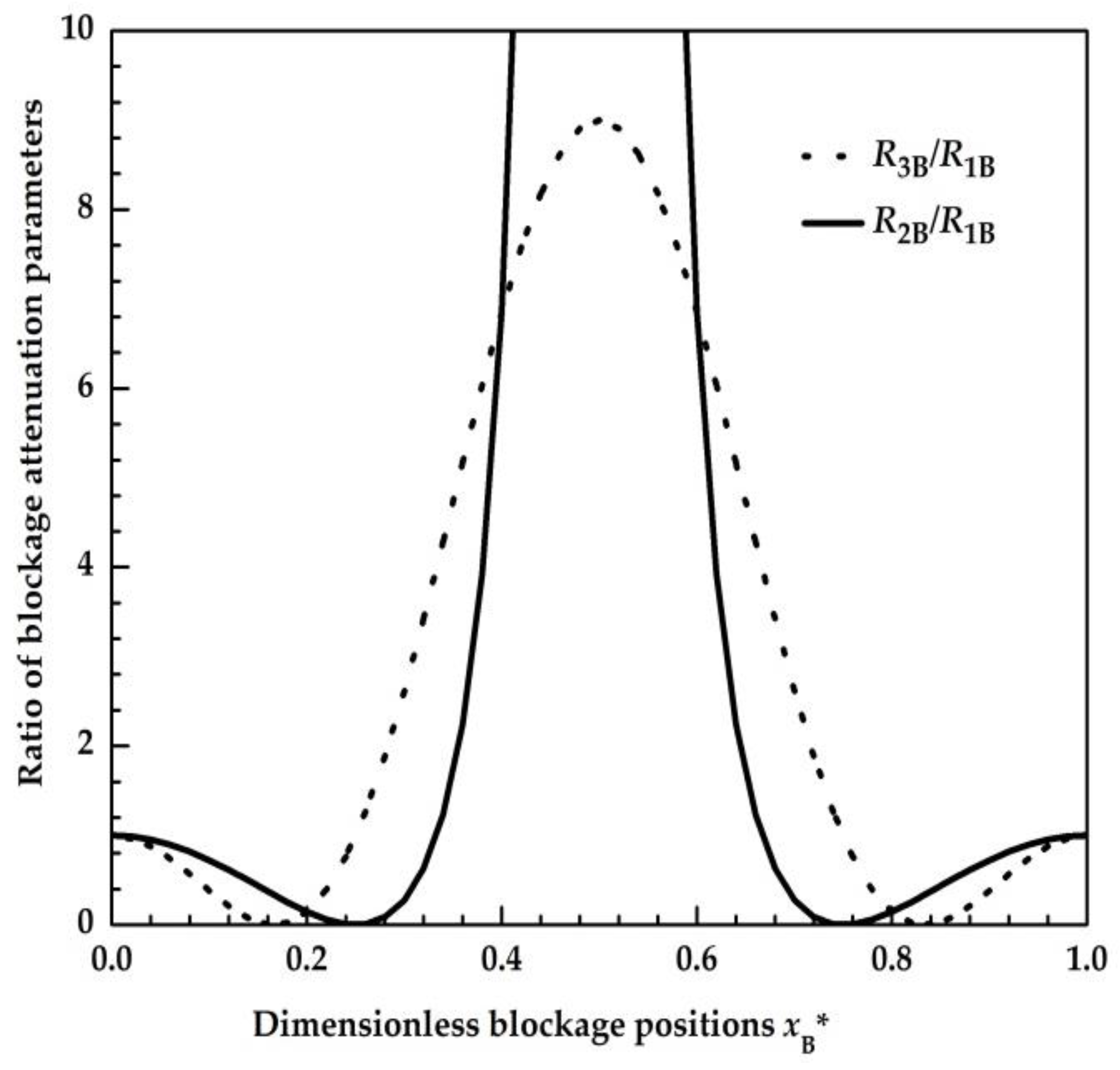
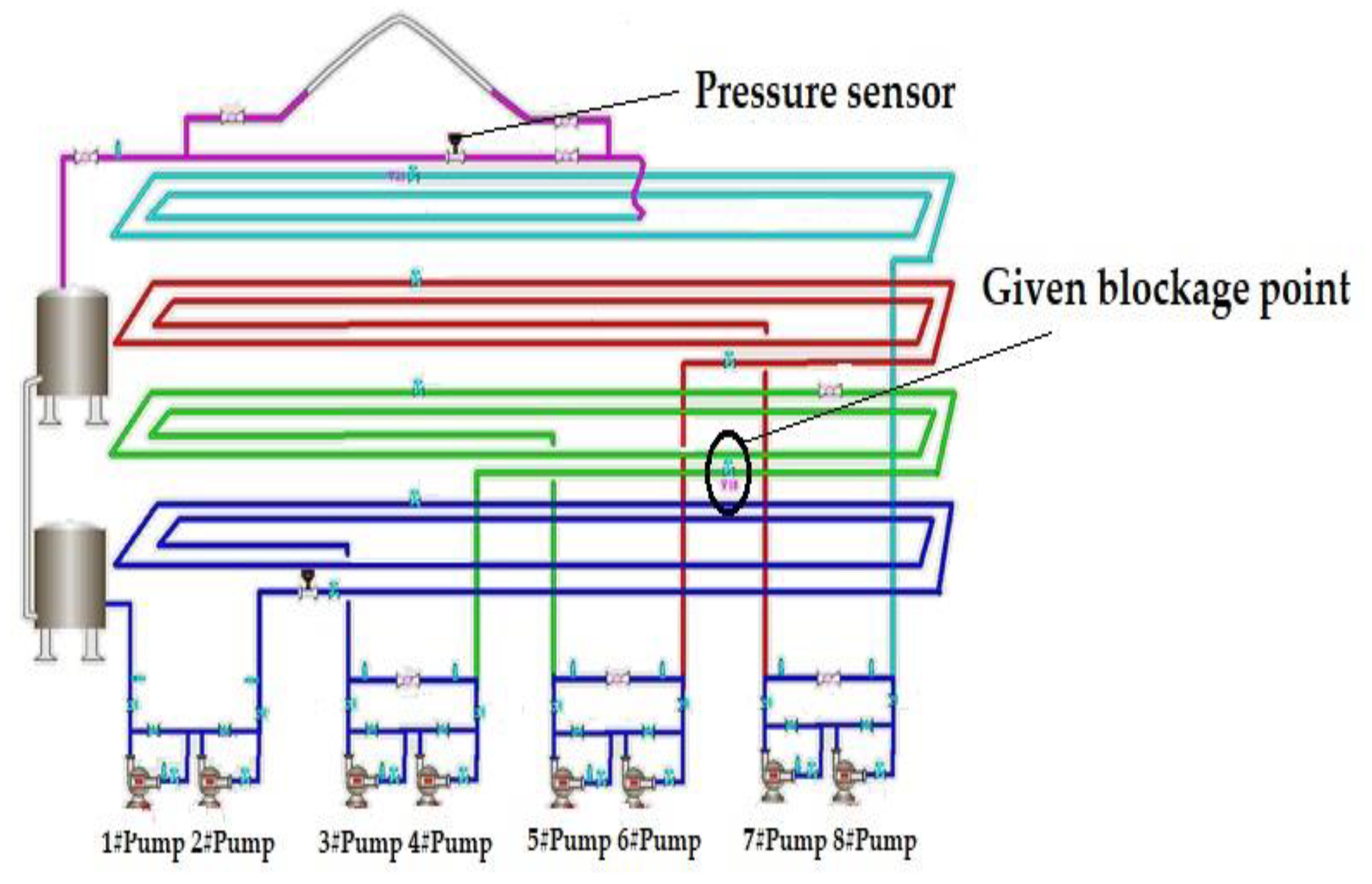
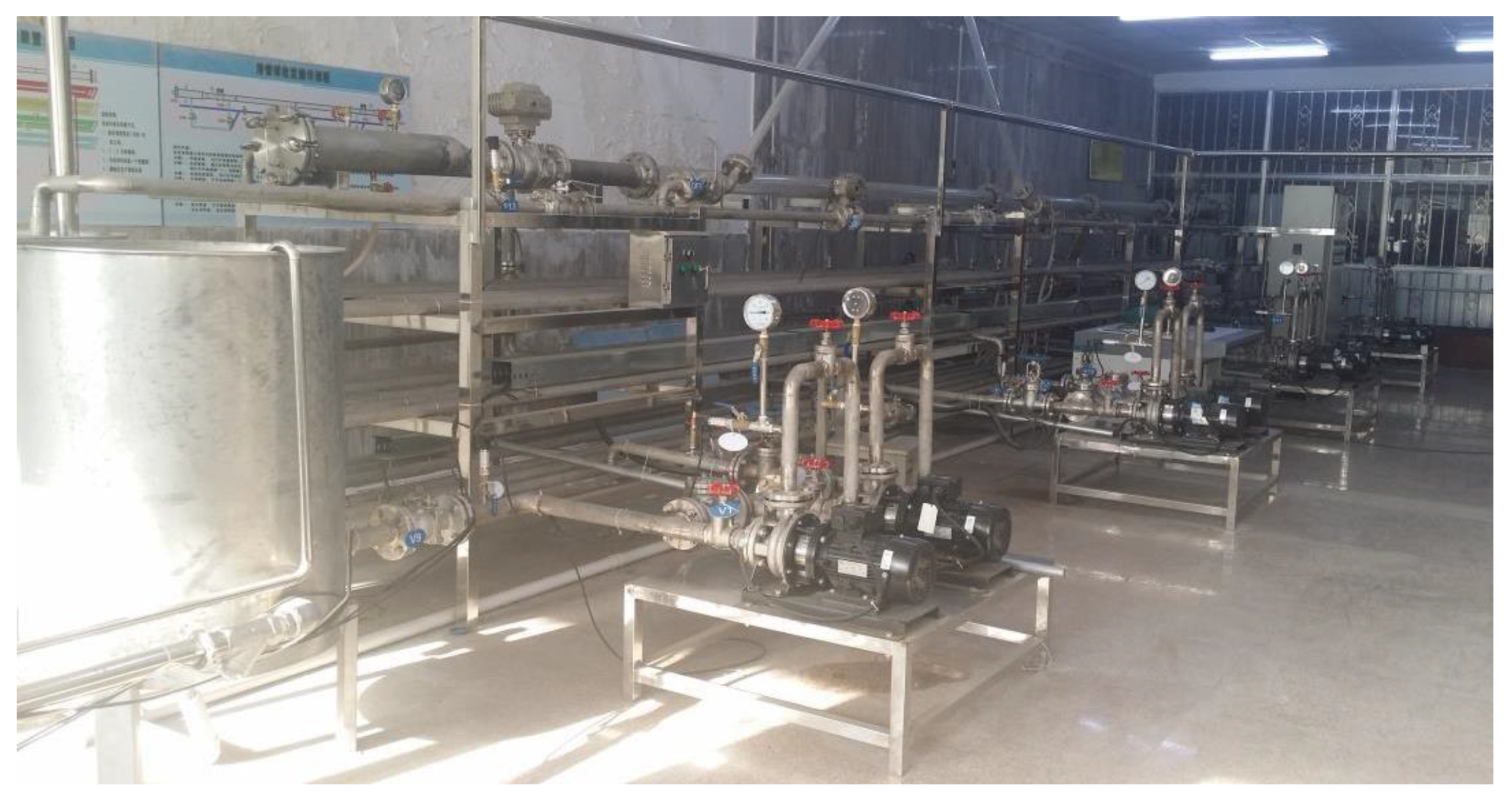
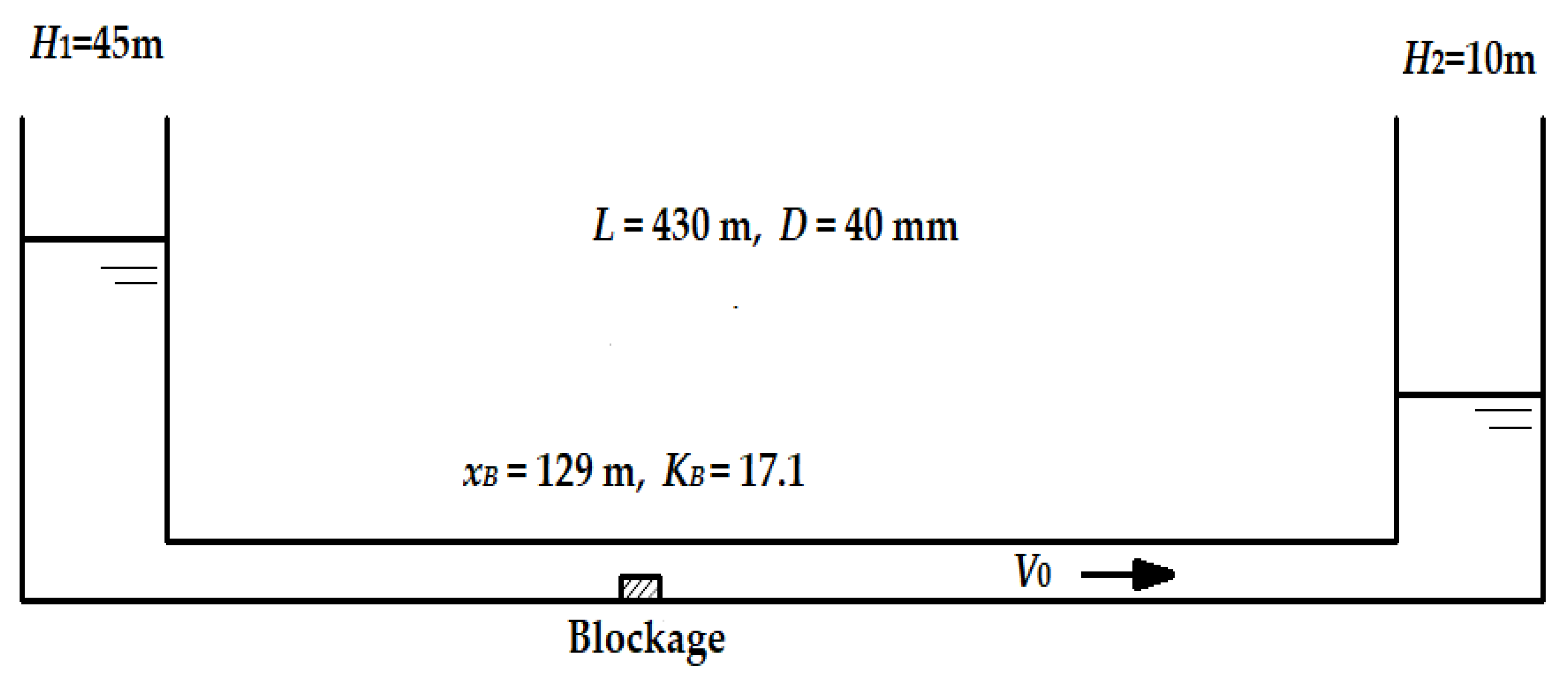

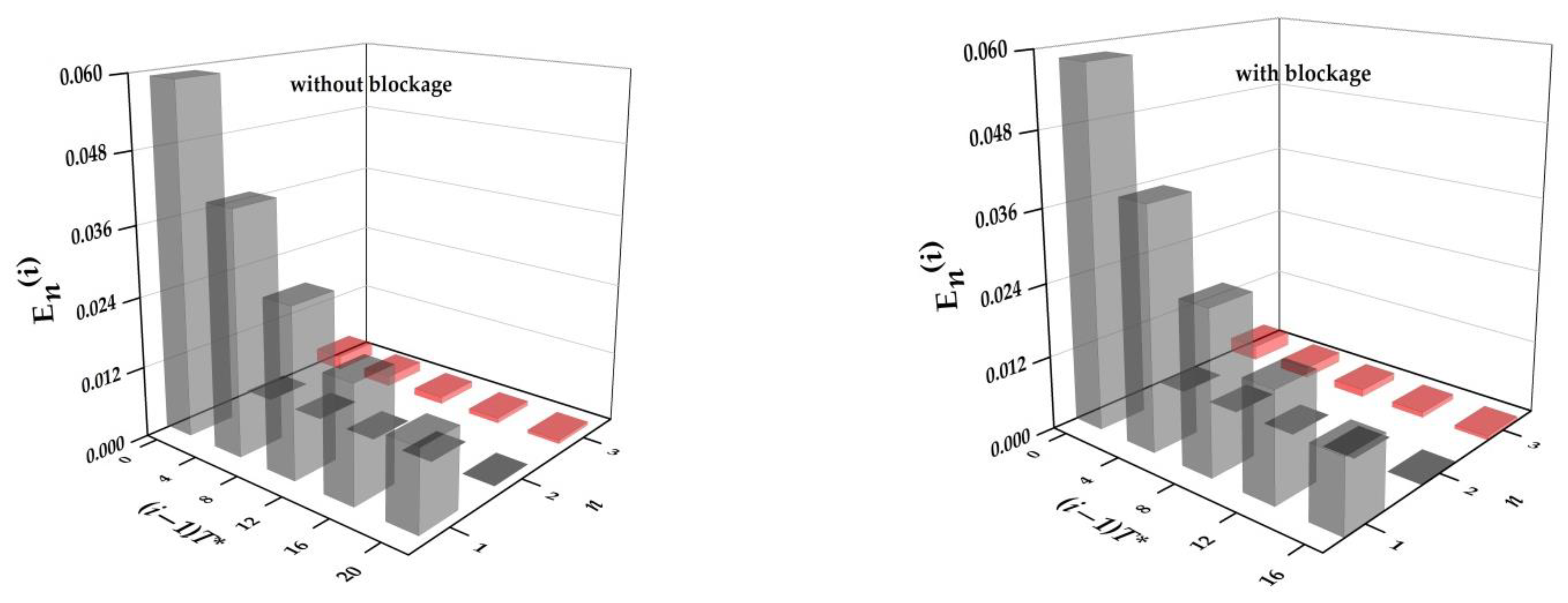
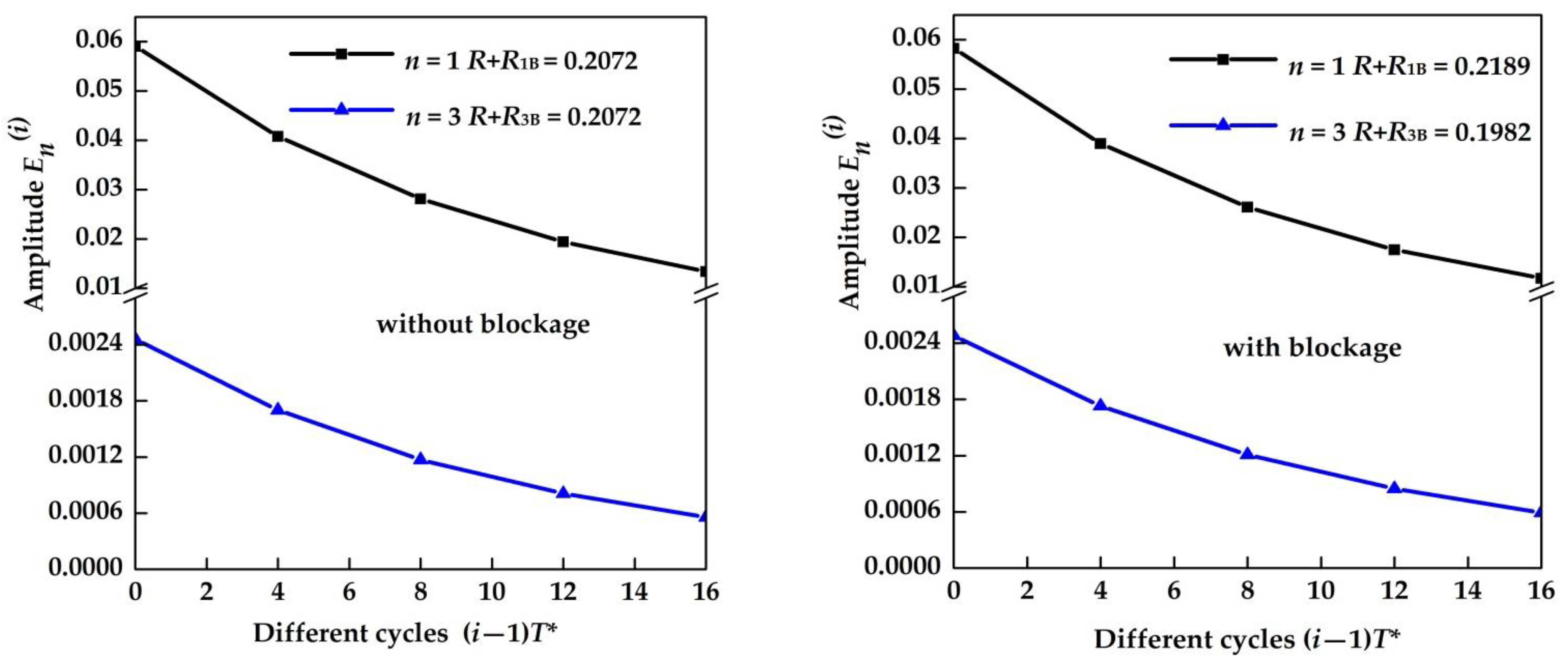
| No. | Name | Quantity | Model | Remarks |
|---|---|---|---|---|
| 1 | Centrifugal pumps | 8 | Motor ZS50-32-160/2.2, power 2.2 kW | − |
| 2 | Turbine flowmeters | 2 | LW-40, output signal 4–20 mA | 0.5% accuracy |
| 3 | Pressure sensors | 13 | Range 0–700 kPa, −100–500 kPa | − |
| 4 | Ball valves | 8 | Q41F-16, nominal pressure 1.6 Mpa | − |
| 5 | Pipeline | − | DN40 | Stainless steel |
Publisher’s Note: MDPI stays neutral with regard to jurisdictional claims in published maps and institutional affiliations. |
© 2022 by the authors. Licensee MDPI, Basel, Switzerland. This article is an open access article distributed under the terms and conditions of the Creative Commons Attribution (CC BY) license (https://creativecommons.org/licenses/by/4.0/).
Share and Cite
Wu, K.; Feng, Y.; Xu, Y. Research on Method for Detecting Pipeline Blockages Based on Fluid Oscillation Theory. Energies 2022, 15, 5373. https://doi.org/10.3390/en15155373
Wu K, Feng Y, Xu Y. Research on Method for Detecting Pipeline Blockages Based on Fluid Oscillation Theory. Energies. 2022; 15(15):5373. https://doi.org/10.3390/en15155373
Chicago/Turabian StyleWu, Kai, Yujie Feng, and Ying Xu. 2022. "Research on Method for Detecting Pipeline Blockages Based on Fluid Oscillation Theory" Energies 15, no. 15: 5373. https://doi.org/10.3390/en15155373
APA StyleWu, K., Feng, Y., & Xu, Y. (2022). Research on Method for Detecting Pipeline Blockages Based on Fluid Oscillation Theory. Energies, 15(15), 5373. https://doi.org/10.3390/en15155373






